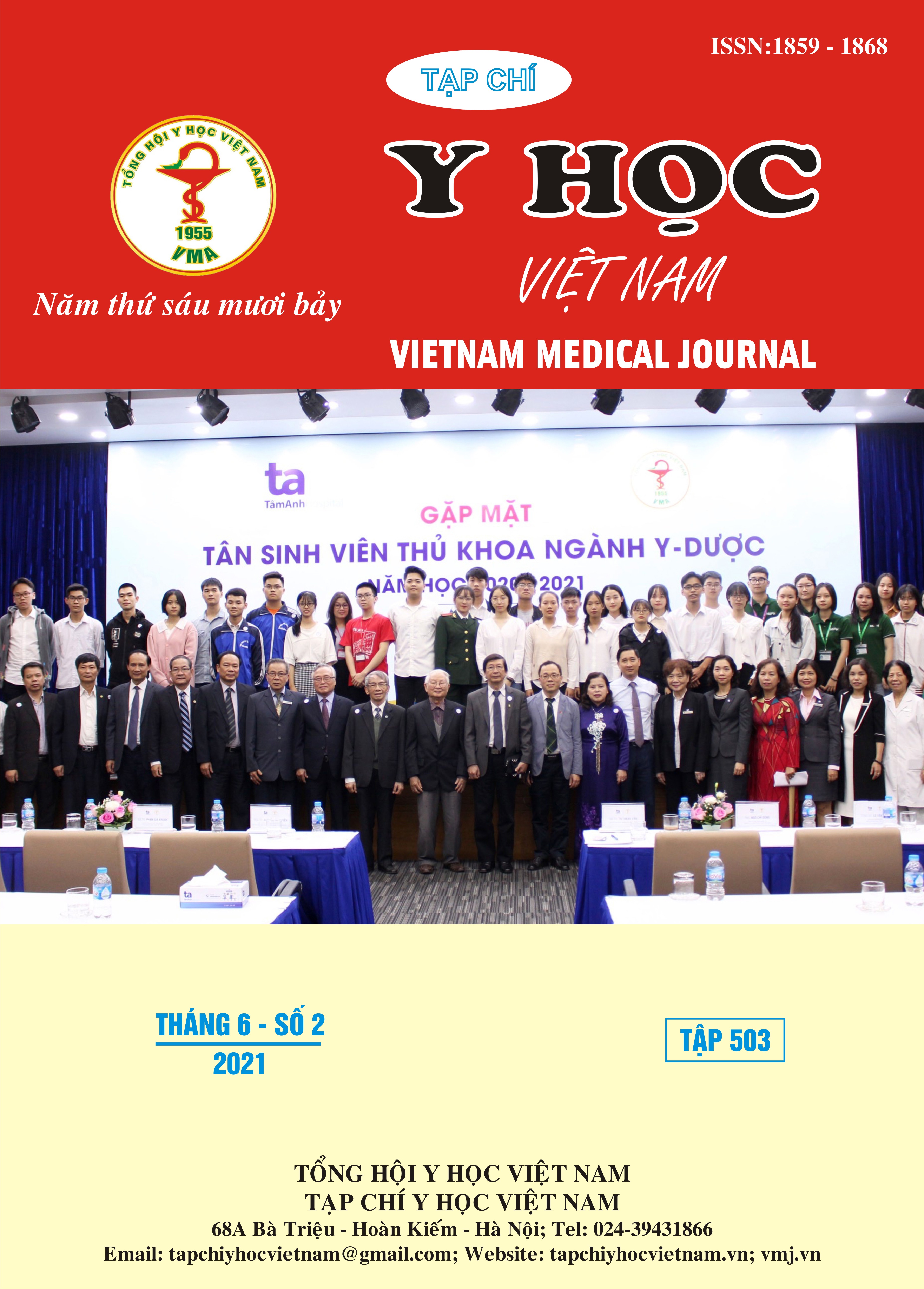ANTIBACTERIAL EFFECTIVENESS AFTER ENDODONTIC TREATMENT WITH SELF - ADJUSTING FILE SYSTEM
Main Article Content
Abstract
Objectives: The purpose of this study wasto evaluate the antibacterial effectiveness when preparing root canal with the self-adjusting file system on the single-canal teeth with necrotic pulp using molecular method. Methods: In vivo study with the independent evaluator, performed on 15 patients with single-canal teeth, necrotic pulp, indicated for endodontic treatment. All objects were instrumented using by the self-adjusting file system under simultaneous irrigation with 3% NaOCl. Microbiological samples in the canal taken before and after root canal preparation with paper points were subjected to real-time polymerase chain reaction (real-time PCR) toquantify total bacteria. Results: The mean concentration of total bacteria in the microbiological samples taken from the root canal before preparation was 4.36 × 107 DU and after preparation was 1.51 × 106 DU (1DU ~ 1-5 copies/ml). Preparation of infected root canals with the self-adjusting file system was statistically significant in reducing total bacterialload in the canal (p <0.05; paired T-test). After root canal preparation,all microbiological samples (S2)still had detectable bacteriaby molecular method. Conclusion: The self-adjusting file system is an effective tool in removing bacteria from infected root canals. However, since bacteria cannot be completely eliminated when preparing infected root canals with the self-adjusting file system, supplementary disinfection strategies are stillrequired.
Article Details
Keywords
self-adjusting file system, antibacterial effectiveness, simultaneous irrigation, endodontic treatment
References
2. Machado M. E. L., Nabeshima C. K., Caballero-Flores H. (2017). "Instrument design may influence bacterial reduction during root canal preparation".Braz Dent J, 28(5), pp. 587-591.
3. Metzger Zvi (2014). "The self-adjusting file (SAF) system: An evidence-based update".Journal of conservative dentistry : JCD, 17(5), pp. 401-419.
4. Nathani T.I., Nathani A.I. , Pawar A.M. (2019). "Canal Transportation and Centering Ability in Long Oval Canals: A Multidimentional Analysis".J Endod, 45(10), pp. 1242-1247.
5. Neves M. A., Rôças I. N., Siqueira J. F. Jr. (2014). "Clinical antibacterial effectiveness of the self-adjusting file system".Int Endod J, 47(4), pp. 356-365.
6. Paqué F., Peters O.A. (2011). "Micro-computed tomography evaluation of the preparation of long oval root canals in mandibular molars with the self-adjusting file".J Endod, 37(4), pp. 517-21.
7. Rodrigues R. C., Antunes H. S., Neves M. A., et al. (2015). "Infection Control in Retreatment Cases: In Vivo Antibacterial Effects of 2 Instrumentation Systems".J Endod, 41(10), pp. 1600-5.
8. Siqueira J.F. Jr., Alves F.R., Almeida B.M. (2010). "Ability of chemomechanical preparation with either rotary instruments or self-adjusting file to disinfect oval-shaped root canals".J Endod, 36(11), pp. 1860-5.


